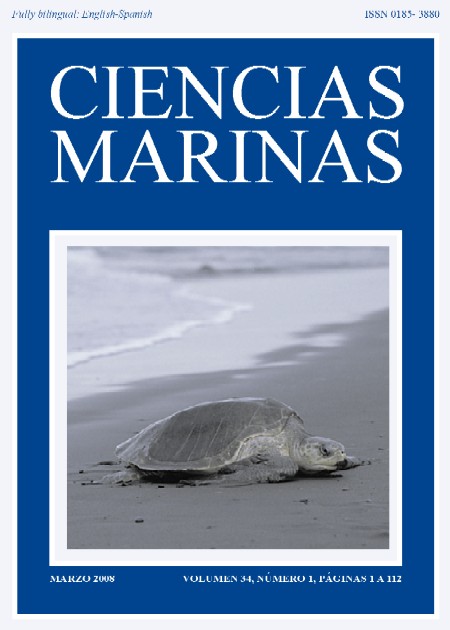Influence of winter waves on the longitudinal growth of the Punta Banda Estuary sandbar, Todos Santos Bay, Baja California, Mexico
Main Article Content
Abstract
Punta Banda Estuary, located within Todos Santos Bay, on the northwest coast of the Baja California Peninsula, is separated from the bay by a single sandbar, approximately 8 km long. From 1972 to 2003 this sandbar showed a longitudinal net growth of 420 m, which decreased the width of the estuary mouth by more than 400 m. Despite the bar's rapid growth it has been suggested that the estuary mouth remains open because in spring, summer and autumn the longshore sand transport is northeastward, but during winter the longshore sand transport should be toward the southwest, away from the mouth, establishing a balance between the amount of sediment transported both ways. In this study we analyze wave data acquired from November 2004 to March 2005 on the bay side of the sandbar, and for the first time provide the magnitude and direction of the longshore sand transport during winter. The results show that during this season the dominant waves approach the bay from the west-northwest and the sandbar from the west, inducing a net longshore sand transport of 817 m3 day–1 to the northeast. This result contradicts the hypothesis of a longshore sand transport balance, and shows that throughout a typical year the net longshore sand transport is to the northeast. The fact that the estuary mouth has not closed up should be attributed to other causes, such as extraordinary amounts of rain during the rainy season or inequalities between the ebb and flood tidal current velocities to the estuary.
Downloads
Article Details
This is an open access article distributed under a Creative Commons Attribution 4.0 License, which allows you to share and adapt the work, as long as you give appropriate credit to the original author(s) and the source, provide a link to the Creative Commons license, and indicate if changes were made. Figures, tables and other elements in the article are included in the article’s CC BY 4.0 license, unless otherwise indicated. The journal title is protected by copyrights and not subject to this license. Full license deed can be viewed here.

